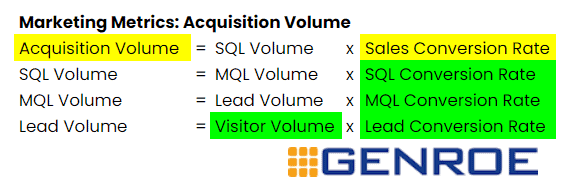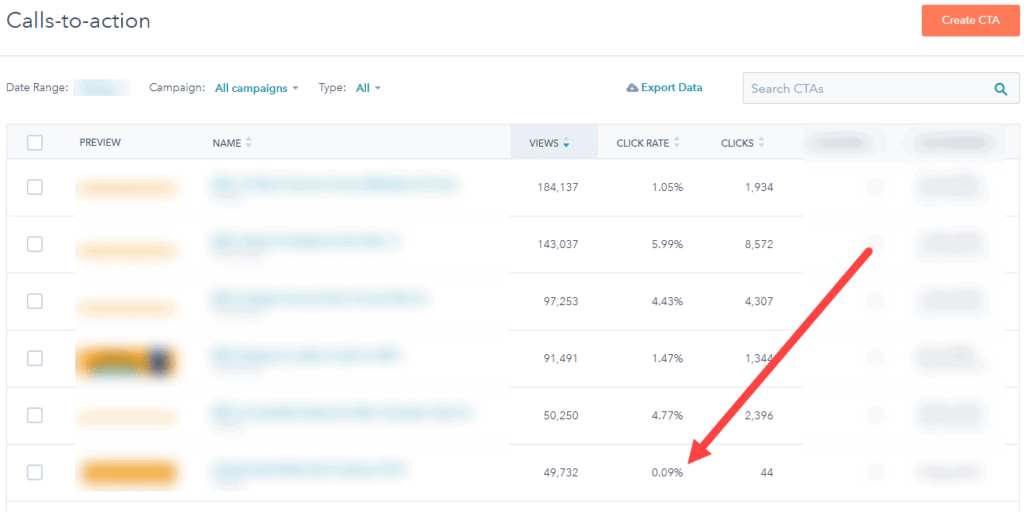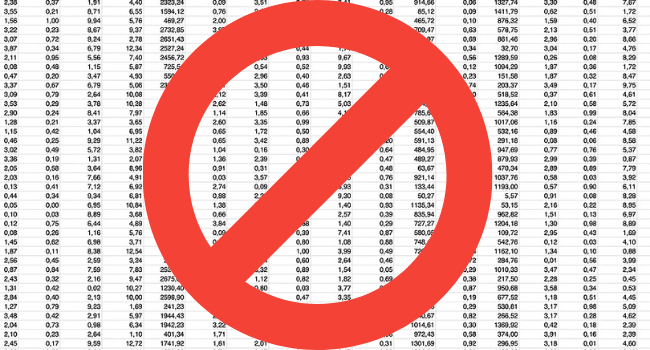While there are literally hundreds, and maybe even thousands, of B2B marketing KPIs that you can track, there are only five that you need to track.
If you’ve ever delved into Google Analytics, Google Ads, the Facebook Advertising portal or even LinkedIn’s Campaign Manager you’ve probably been overwhelmed with the sheer volume of metrics and data it’s possible to track. Digital marketing has enabled us to track everything, and we do. Now the problem is what to track.
In this post I’ll show you how to focus on just five KPIs to understand exactly where your marketing efforts are being successful and where to focus for improvement.
Post Links:
- The Five Critical B2B Marketing KPIs
- Defining the B2B Sales and Marketing Stages
- B2B Sales Volume Related Marketing B2B Metrics
- B2B Cost of Sales Related Marketing B2B Metrics
- What About the Hundreds of Other B2B Marketing KPIs
The Five Critical B2B Marketing KPIs
Here are the only B2B Marketing metrics you need to track:
- Cost Per Visitor (cost to acquire one visitor/eyeball/etc)
- Visitor Volume (visitors in a given time period)
- Lead Conversion Rate (Visitor to Lead)
- MQL Conversion Rate (Lead to MQL)
- SQL Conversion Rate (MQL to SQL)
With just these five pieces of data you can completely define your marketing process, identify where to invest/de-invest, where to focus for improvement.
In short; everything you need to be successful.
Defining the B2B Sales and Marketing Stages
There are many ways to define the different stages in the B2B sales funnel but here we’ll use a fairly standard set of definitions;
- Sale – A Sale is an SQL that has made a purse, i.e. a new customer.
- SQL – A Sales Qualified Lead is an MQL that has demonstrated a need and ability to buy from you in the current sales time period
- MQL – A Marketing Qualified Lead is a Lead with the characteristics of someone who might buy from your organisation, just not in the near term.
- Lead – a Visitor who’s name and contact details you know
- Visitor – an anonymous person
In practice the detailed definition of each of these needs to be agreed by the business between the Sales and Marketing groups but these are good starting points.
Also, depending on your industry, you might chose to track other, “state of the sale metrics” instead of SQLs, e.g. Product Qualified Leads if you are in B2B SaaS. (Hat-tip Peter Preston over at ThinkTilt)
Now let’s apply these to our metrics.
B2B Sales Volume Related Marketing B2B Metrics
We start with the Sales Volume the organisation needs to meet it’s business targets and then build a simple set of equations that tie business Sales Volume requirements directly to Visitor Volume requirements.
Here are four of the five metrics and the equations that tie them together with the Prospect stages:

The key metrics are highlighted in green. The ones in yellow are managed or defined by other parts of the organisations.
You’ll note that ALL of the other metrics are uniquely defined as soon as you have the metrics in green defined.
Here Sales Conversion Rate (in yellow) is not reported by Marketing as it’s assumed to be part of the Sales metrics dashboard.
B2B Cost of Sales Related Marketing B2B Metrics
Of course Sales volume metrics are only part of the picture. It’s easy to generate sales with an unlimited budget. So we now look at the second part of the equation: cost of acquisition.
Here are the analogous equations based on cost not volume.

In a similar way we build up the Cost Per Sale from each of the elements. Notice that we have added just one new metric to our Marketing KPIs: Cost Per Visitor.
So there we have it just five metrics to wholly define our marketing success.
What About the Hundreds of Other B2B Marketing KPIs
Of course the question is now: what about all those other hundreds/thousands of KPIs – why aren’t we tracking those?
Aren’t Facebook likes, website page views, bounce rates, CPMs, et.c also important?
Yes – they are – but only in the right context. You should think about them as Diagnostics KPIs, only to be used in problem diagnosis, not regular weekly/monthly reporting.
Here’s an example: say the business has decided that more sales are required (when has it not). Looking at your five key marketing metrics you decide the lowest hanging fruit is to lift Lead Conversion Rate.
As you primarily drive Lead Conversions via on-site content marketing you focus on the diagnostic information relevant to that metric. To do that start by creating a simple equation to understand what’s driving it.
Lead Conversion Rate = Page Views x Call To Action Click Rate x Form Completion Rate
From here you make a judgment call that you’ve already optimised Page View Growth and Form Completion Rate so you decide to investigate Calls to Action Click Rates.
Now you jump into your handy marketing automation system and review the CTA report and you see this:

It’s pretty obvious that the last CTA is not pulling it’s weight so the next action is clear: fix that CTA.
Nice: one clearly defined job to do.
At this point you might say to yourself:
Wow that CTA Click Rate was really useful and important, let’s make sure we report that in every week’s Marketing KPI reports.
And you’d be wrong, right, but wrong. (It’s an Australian thing)
Right: CTA Click Rate was an important marketing metric in this specific instance.
Wrong: if you keep reporting every “useful” metric in this specific instance you eventually end up with worthless complexity like you see below.
Lots and lots of data but no information that will help you make a decision.

You may decide to report internally, i.e. in marketing, for a few weeks on Call To Action Click Rate to make sure your changes actually worked.
But don’t be tempted to report it long term – you can always grab a once off report when you need it for investigation and action.
Of course you’ll see the overall improvement in your five critical Marketing KPIs as Lead Volume ticks up. Which is what you were trying to achieve in the first place.

